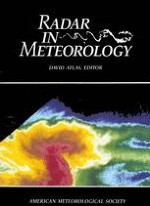1990 | OriginalPaper | Buchkapitel
UHF/VHF Radar Techniques for Atmospheric Research and Wind Profiler Applications
verfasst von : J. Röttger, M. F. Larsen
Erschienen in: Radar in Meteorology
Verlag: American Meteorological Society
Enthalten in: Professional Book Archive
Aktivieren Sie unsere intelligente Suche, um passende Fachinhalte oder Patente zu finden.
Wählen Sie Textabschnitte aus um mit Künstlicher Intelligenz passenden Patente zu finden. powered by
Markieren Sie Textabschnitte, um KI-gestützt weitere passende Inhalte zu finden. powered by
An explosive growth and development in coherent-backscatter radar techniques for studying the structure and dynamics of the troposphere and stratosphere has occurred in the past two decades. Ultra-High Frequency (UHF) and Very High Frequency (VHF) radars can detect echoes caused by Bragg scatter from refractive index structure due to variations in humidity and temperature in both the clear and cloudy atmosphere, and they have now become accepted in the radar meteorology community as a valuable complement to the weather radar measurement techniques that make use of Rayleigh scattering from hydrometeors. The UHF and VHF radars typically operate in the frequency range from the low VHF band (40–50 MHz) to the upper UHF band (3 GHz). In the low VHF band, Bragg scatter from electron density variations in the mesosphere can also be detected.
